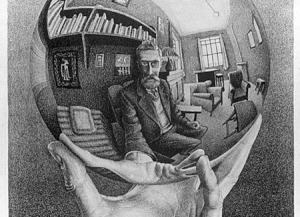Many of us have been in “Leadership Training” since we were very young. We learned leadership  informally, through participation in sports teams, youth organizations, or community groups. And sometimes we learned it formally, through events, retreats, and challenges. But one thing that’s probably true of all of it is that we never called it “leadership training.” It was about having great experiences.
informally, through participation in sports teams, youth organizations, or community groups. And sometimes we learned it formally, through events, retreats, and challenges. But one thing that’s probably true of all of it is that we never called it “leadership training.” It was about having great experiences.
Leadership is a difficult topic to get your arms around. Part of that is because leadership content is easy to understand, but hard to actually do. It’s rare that I hear someone say, “I just read Peter Drucker (or Covey, or Kouzes & Posner, or Conner), and I have no idea what he’s talking about.” Actually, I find people are very inspired by these books, and are excited to put these ideas into practice. And that’s where things get dicey, because sometimes these behaviors are very hard to do properly. Why? Lots of reasons: I’m intimidated by my team members. I don’t want to give people bad news. I don’t think my boss will support me. I don’t think my organization “gets it.” The list goes on and on.
It certainly doesn’t help that a lot of leadership programs are a parade of models, disjointed, without context. Situational Leadership! Myers Briggs! DISC! These are wonderful, thoughtful, well-researched models, but when they come at you in rapid succession, as if fired out of a cannon, they can become an endless series of matrices, process graphs, and pie charts that have little relevance to actually being a leader.
So what are the missing pieces? The first is context. These models are not stand-alone solutions; they are tools in a toolkit. Can you imagine learning carpentry by spending one day on the hammer and then the next day on the screwdriver? Of course not; there’s no context. Your goal is to build something; tools help you build. As a leader, you manage people, processes, tools, and money (yes, money). The tools need to help you do that. If you don’t understand how the tools get you closer to your goals, then you really don’t understand the tools.
 The second missing piece is experience. Effective leadership programs have a strong experiential component, the more, the better. Sometimes, experiential learning can be low risk, as in simulations. A good simulation can provide a safe environment to practice new behaviors, try out models, and get a feel for how people will react to you. An angry team member can be a rude surprise for a new leader, but if the leader has had the experience of dealing with this behavior in a simulation, she may be able to handle it better in real life. But good programs will also have experiential assignments, the chance to use new behaviors in real life. This may include job shadowing (observing an experienced leader as they go through their day), leadership of project teams or communities of practice, or feedback from coaches and mentors.
The second missing piece is experience. Effective leadership programs have a strong experiential component, the more, the better. Sometimes, experiential learning can be low risk, as in simulations. A good simulation can provide a safe environment to practice new behaviors, try out models, and get a feel for how people will react to you. An angry team member can be a rude surprise for a new leader, but if the leader has had the experience of dealing with this behavior in a simulation, she may be able to handle it better in real life. But good programs will also have experiential assignments, the chance to use new behaviors in real life. This may include job shadowing (observing an experienced leader as they go through their day), leadership of project teams or communities of practice, or feedback from coaches and mentors.
In her wonderful book Becoming a Manager: How New Managers Master the Challenges of Leadership, Linda Hill of Harvard Business School observed that a very high percentage of first-time managers failed at their jobs, due to a gap in expectations between what they thought the job would be like, versus what it actually was like. In simplest terms, they didn’t know what they were getting themselves into. By creating leadership programs that focus on context and experience, we help guarantee that our next generation of leaders is prepared for the realities of the job.
How to Train an Executive: Quick, Relevant Content
and Meaningful Conversations Blog
Partnering for Global Leadership Case Study
Leadership and Development Benchmarking Case Study
Driving Sales Leadership Best Practices Case Study

Rich Mesch is Senior Director, Customer Engagement at
Performance Development Group.



 Reni: I read an article on The Economist titled:
Reni: I read an article on The Economist titled:  Rich: I attended several learning conferences this year, and at each one, I heard some variation on this message: it's time to get past old school training models, because the generation of 20-somethings entering the work force don't learn that way. We need social media for the 20-somethings, because that's how they learn. We need virtual environments for the 20-somethings, because that's how they learn. And every time, I wanted to scream from the back of the room, "HEY! I'M A 40-SOMETHING, AND I LEARN THAT WAY, TOO!"
Rich: I attended several learning conferences this year, and at each one, I heard some variation on this message: it's time to get past old school training models, because the generation of 20-somethings entering the work force don't learn that way. We need social media for the 20-somethings, because that's how they learn. We need virtual environments for the 20-somethings, because that's how they learn. And every time, I wanted to scream from the back of the room, "HEY! I'M A 40-SOMETHING, AND I LEARN THAT WAY, TOO!"



